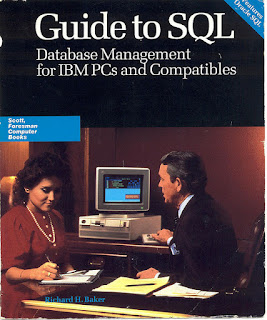This is the third and the last post in the three-post series on challenges associated with sales of disruptive platforms such as Big Data and how you can effectively work with your prospects and others to mitigate them. If you missed the previous posts the first post was about “why buy anything” and the second post was about “why buy mine." This post is about “why buy now."
Platform sales is often times perceived as a solution looking for a problem a.k.a hammer looking for a nail. In most cases your prospects don’t have a real urgency to buy your platform making it difficult for you to make them commit on an opportunity. There are a few things that you could do to deal with this situation:
Specific business case
It’s typical for vendors to create a business case positioning their solutions to their prospects. These business cases include details such as solution summary, pricing, ROI etc. If you’re a platform vendor not only you have to create this basic business case but you will also have to go beyond that. It’s relatively hard to quantify ROI of a platform since it doesn’t solve a specific problem but it could solve many problems. It is extremely difficult to quantify the impact of lost opportunities. If your prospect doesn’t buy anything do they lose money on lost opportunities? Traditional NPV kind of analysis goes for a toss for such situations.
As a vendor not only you will have to articulate the problems (scenarios/use cases) that you identified leading up to this step but you might also have to include more scenarios that were not specifically discussed during the evaluation phase. Getting a validation from the business on expected return on their investment while fulfilling their vision is crucial since your numbers will most likely get challenged when your prospect creates its own business case to secure necessary investment to buy your platform.
Leveraging the excitement
What seemed like a problem when you worked with a variety of people inside your prospect’s organization may not seem like a problem in a few weeks or months. It’s very important in platform sales cycle not to lose momentum. Find a champion of your pilot keep socializing the potential of your platform inside your prospect’s organization as much as you can while you work on commercials of your opportunity. People should be talking about your disruptive platform and wanting to work with you. Cease that moment to close it.
Knowing who will sign the check
Platform sales are convoluted. People who helped you so far may not necessarily help you with the last step—not that they don’t want to but they may not be the buyers who will sign the check. It’s not uncommon in enterprise software sales to have influencers who are not the final buyers but the buyers do have somewhat defined procurement process for standard solutions. When it comes to buying a platform many buyers don’t quite understand why they should be spending money on disruptive platform that may or may not necessarily solve a specific problem.
To complicate this further, for disruptive technology, it typically tends to get cheaper as it becomes more mature. This gives your prospect one more reason to wait and not buy your platform now. As I mentioned in the previous post your focus should never be on pricing (unless of course you are the best and cheapest vendor by a wide margin) but on immediate returns, no lost opportunities, and helping your prospect gain competitive differentiation in their industry.
Despite of working with your prospect for a while helping them define problems and piloting your platform to prove out the value proposition, you might get asked again to do things all over again. There are two ways to mitigate this situation: a) involve buyers early on in the sales process and not at the very end so that they are part of the journey b) work aggressively with your influencers to establish appropriate communication channels with the buyers so that it’s the influencer’s voice they hear and not yours.
Happy selling!
Photo Courtesy: Wierts Sebastien



















